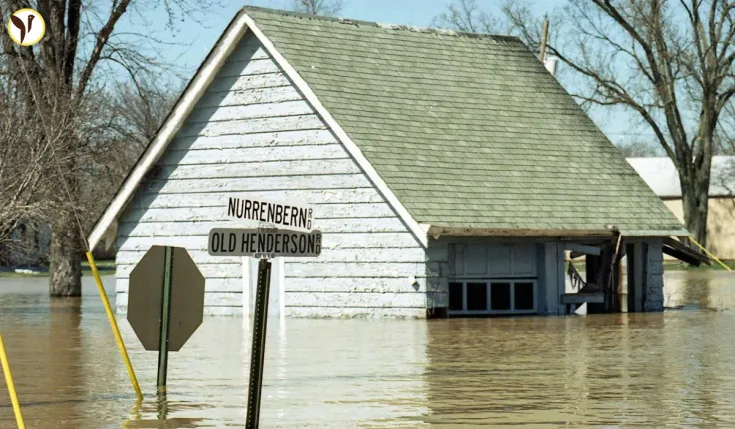Buckle Up, Midwest: We're in for a Soaker!
Whoa, Midwest! Get ready for some serious rain. We're talking potentially over a foot of it in some spots, and that's not even the worst part. This week's weather is looking seriously nasty, and a big chunk of the region—from Arkansas all the way up to Ohio—is squarely in the bullseye.
Meteorologists are predicting some pretty intense rainfall, which unfortunately means a significantly increased risk of flash flooding. The National Weather Service (NWS) has already issued severe weather warnings and flood watches affecting millions. Honestly, who saw that coming?
What's the Big Deal with Flash Flooding?
The NWS has been pretty clear with their warnings, especially for Ohio. A flood watch means flooding is possible—it's a heads-up to start getting ready. But a flood warning? That's a different story. That means flooding is either happening right now or about to, and you need to take action immediately. Get to higher ground!
And here's the scary thing about flash floods: they're fast. We're not talking days or even hours of warning; these things can happen in minutes. A normally calm creek can turn into a raging torrent in the blink of an eye, and streets that were fine a moment ago can be underwater the next. It kinda felt like watching a slow-motion trainwreck unfolding.
Staying Safe: It's Not Rocket Science (But It Is Important)
Both the NWS and the Ohio Emergency Management Agency are urging folks to be prepared. Here's what you need to do:
- Prepare early: Pack an emergency kit. Think food, water, important medications, and fully charged electronics. And, super important, figure out your escape routes to higher ground. Know where you're going before you need to go.
- During a flood: This is the crucial part: Avoid floodwaters completely. Seriously, don't even think about it. Get to higher ground immediately. And absolutely, positively, do not go into any basements or flooded areas with electrical outlets. Evacuation orders? Obey them.
- After a flood: Even after the rain stops, danger lingers. Floodwaters can hide all sorts of nasty stuff: sewage, chemicals, downed power lines—you name it. Stay away until authorities say it's safe to return home.
Flood vs. Flash Flood: What's the Difference?
Both involve too much water, obviously, but that's where the similarities end. Flooding usually develops slowly over days or even weeks. Flash floods? They're the fast-moving, intense cousins that pack a much more immediate punch. That suddenness and destructive power are what makes them so dangerous.
What's Happening Now?
This severe weather system is hitting several states hard. There are already reports of significant damage from tornadoes and flooding across the Midwest. The situation is constantly changing, so staying updated through official sources like the National Weather Service and your local news is crucial. Remember the golden rule: “Turn around, don’t drown.” Never try to drive through floodwaters.
This isn't a drill, folks. Flash flooding is a real and serious threat. By being prepared, understanding the warnings, and following safety guidelines, you can significantly lower your risk. Let's all stay safe out there.






